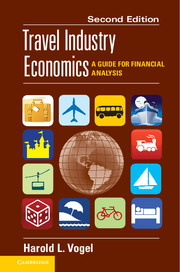Book contents
Chapter 8 - Performance and Policy
from Part V - Roundup
Summary
To travel hopefully is a better thing than to arrive.
– Robert Louis Stevenson, An Apology for Idlers, 1877Common Elements
As seen in Chapter 1, leisure time – broadly defined as time not spent at work – has been expanding slowly, if at all, in recent years. Over the long run, the potential to expand leisure time depends on the rate of gain in economic productivity, which is in turn affected by the rate of technological development.
Nevertheless, after deducting life-sustaining activities from nonwork time, we have what is known in the vernacular as free time. But time is never really free in an economic sense because there are always alternative-opportunity costs. It is this opportunity-cost aspect, applicable to both leisure and business travel, that enables travel companies to successfully engage price-discrimination strategies that have positive effects on profits. It is also why, for all but the shortest trips, travel by air can take share away from other travel modes even though air tickets may cost significantly more in terms of monetary cost per trip.
Beyond these generalities are several frequently observed travel industry characteristics.
- Type
- Chapter
- Information
- Travel Industry EconomicsA Guide for Financial Analysis, pp. 259 - 266Publisher: Cambridge University PressPrint publication year: 2012



